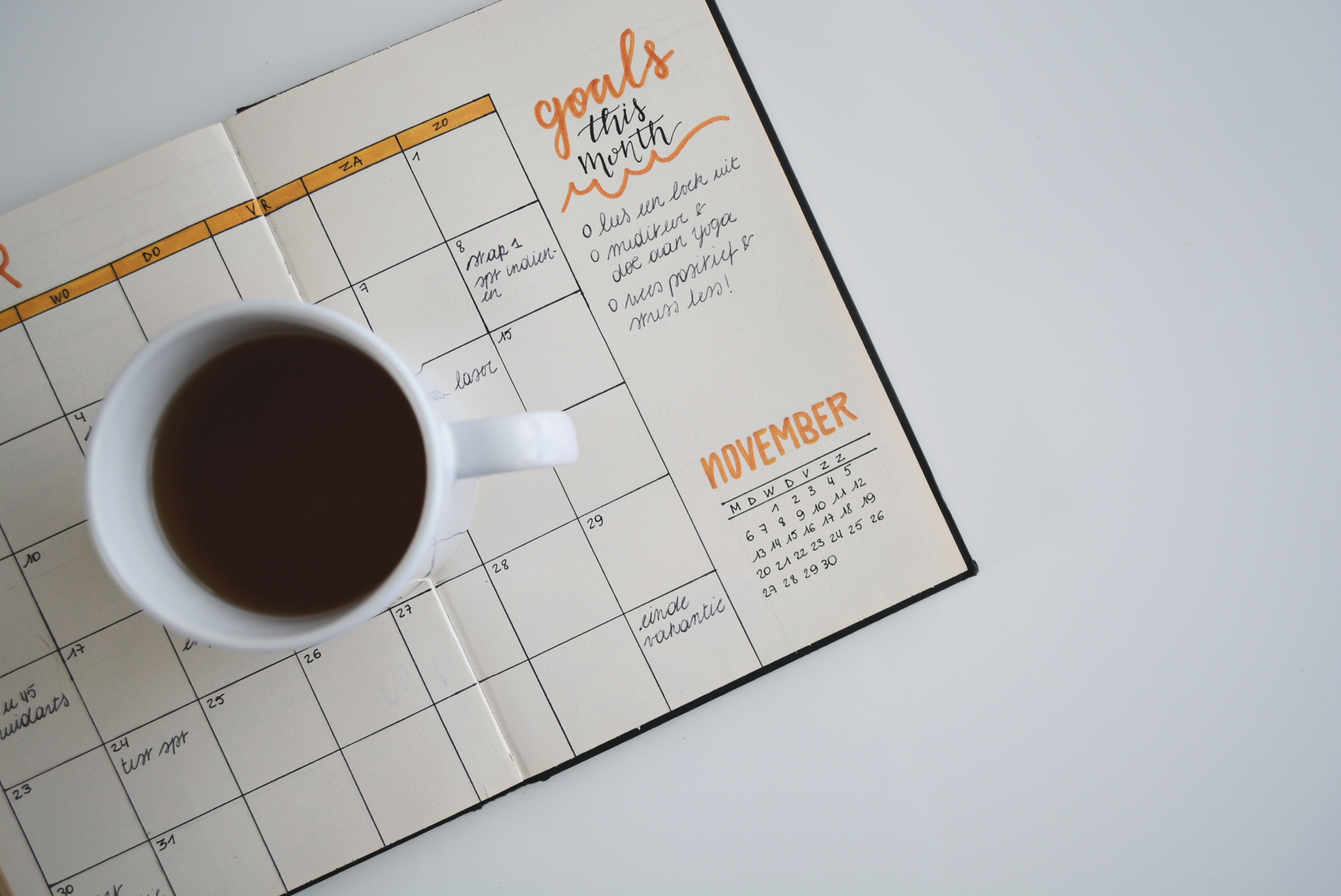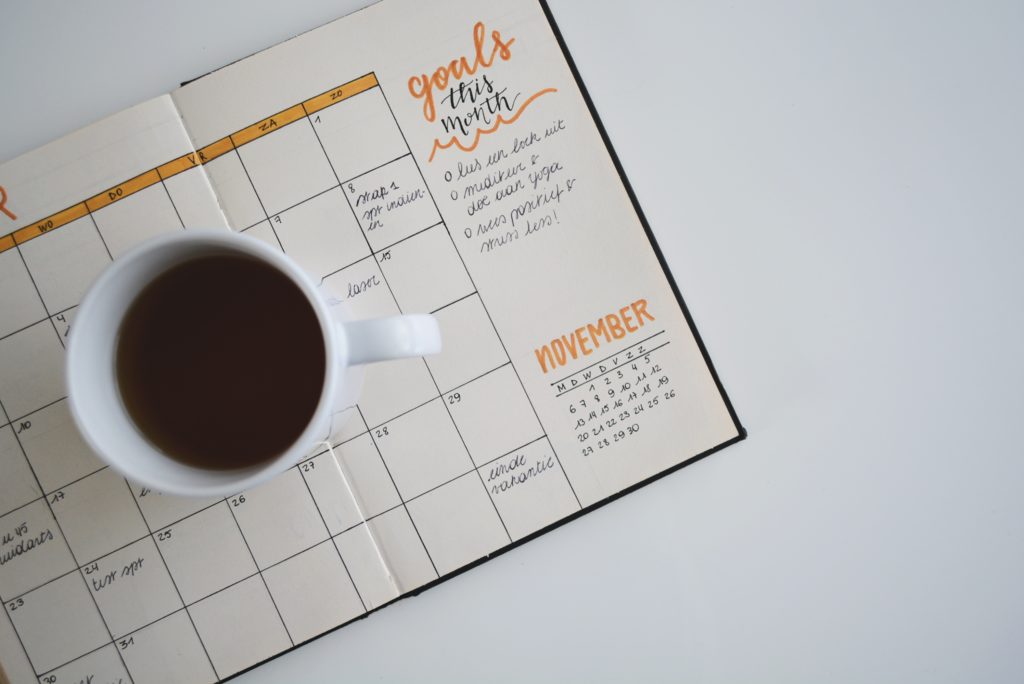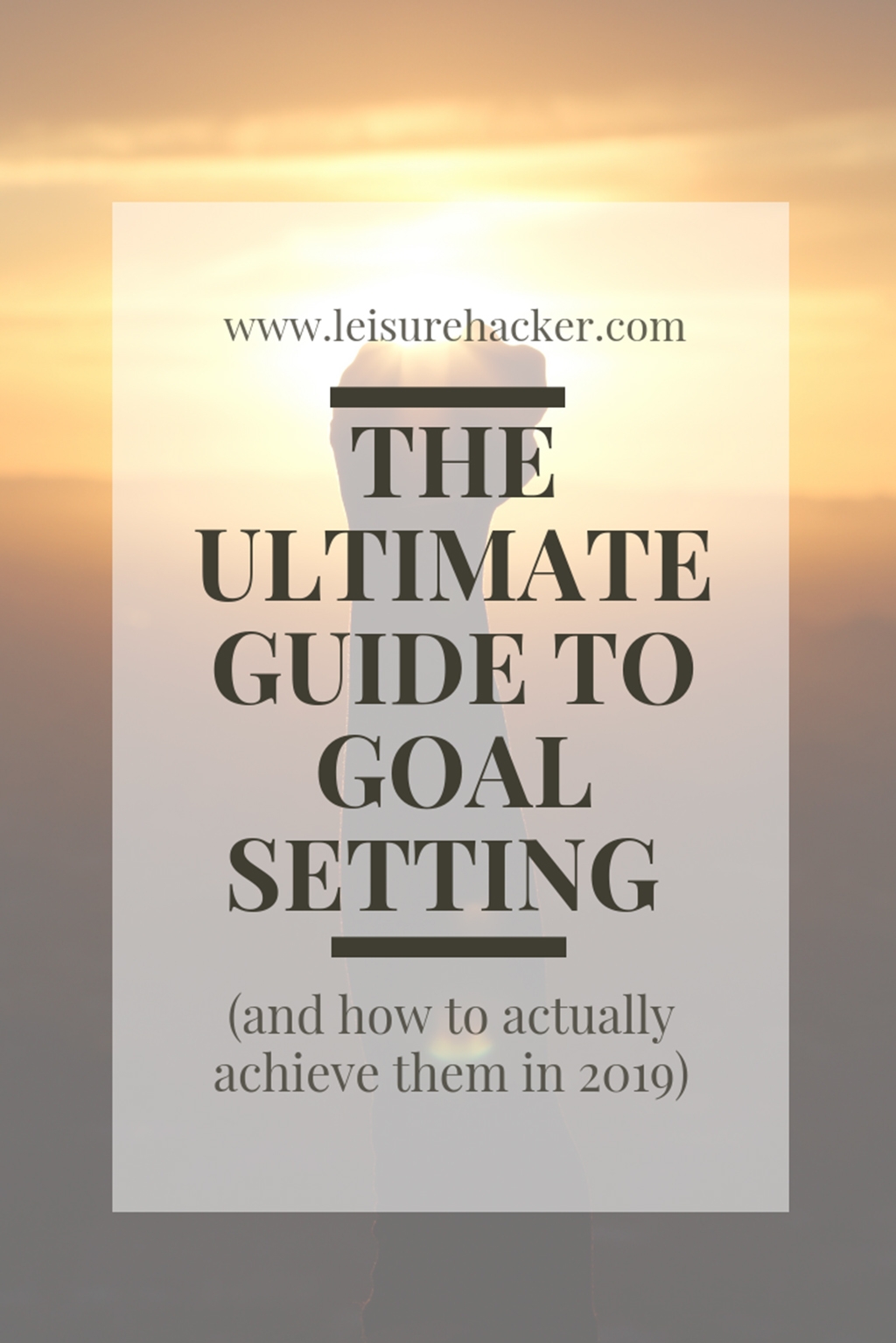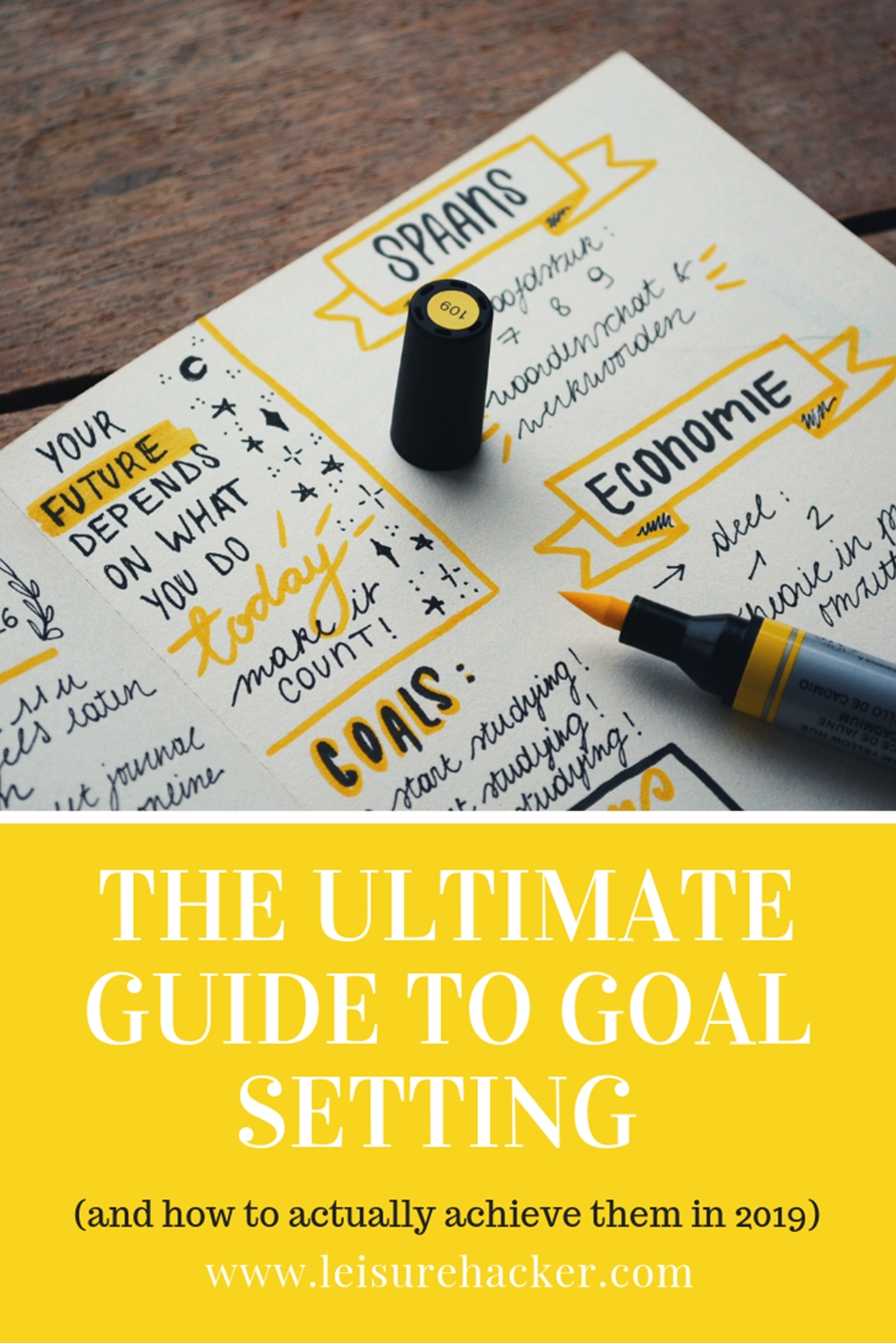The ultimate guide to goal setting (and how to actually achieve them in 2019)

December 16, 2018
So it’s New Year’s Eve, you sit down and set these fabulous resolutions; declaring “this year is the year I’m going to XXX”! But comes next New Year’s Eve and nothing has really changed…
If this sounds familiar, this post is for you.

So this year, let’s not just throw resolutions like “I want a million dollars” or ” I want to find love” or “lose 20 pounds” – into thin air or a random piece of paper. Let’s learn how to set goals and map out the plan to achiev them.
A goal without a plan is just a wish | Antoine de Saint-Exupéry
The first step is to remember that goals are not like bucket lists, wishes, dreams or resolutions–they are things you actually want to have and willing to do the work it takes to get them.
I’m the first person to tell you to dream big and that nothing is outside of your reach… But in order to get the things we want we need to dream but then also plan thoroughly and execute.
So… how do we start?

Set (the right) goals
1. Go crazy
Start with making a long list of all the things you want. Go as crazy as you can without holding yourself back. Then, from that list pick a handful of things you’re going to turn into goals and achieve this year.
2. Be realistic
If you set too many goals, you’ll be less likely to achieve any of them. Never bite more than you can chew… I usually like to pick no more than 2-4 major goals. You can pick one or two personal goals and 1-2 professional goals for a fun balance 😉
Also, remember that In order to achieve something it needs to be just crazy enough so it will make you work for it but not too crazy that you get discouraged. Choose something that is just a little outside of your comfort zone.
People with goals succeed because they know where they’re going | Earl Nightingale
I’m totally for crazy-ass-life-changing goals but being realistic and setting “pretty” achievable goals will make you less overwhelmed and much more motivated to work for it. Because it’s just outside your comfort zone, you’ll just need to reach out and grab it. Once you’ve achieved it – you can set another step further to your big dream. Baby steps are the key here.
3. Set a time frame
Because we tend to lose our drive and motivation over time we need to set a time frame for us to check up on the progress we made and maybe tweak and reset our goals. Research says that 90 days is the ideal time frame to focus on a goal. The 90 days’ time frame is also based on the age-old belief that it takes time for new neuropathways to be fully formed in our brain and create a new lifestyle.

Related: the bucket list hack that will blow your mind”
4. Remember the Why
When you set goals you need to be clear on your “why”. Once you get clear on your “why” it will be easier for you to focus and stay motivated.
If you want to live a happy life, tie it to a goal, not to people or things | Albert Einstein
5. Be SMART
The goals you pick need to be S.M.A.R.T goals (Specific, Measurable, Achievable, Relevant, Time-bound)
Specific
For example, “Starting my own business” is a vague goal. Do you mean you want to be independent? Time or locations wise? Do you want to open your own store or become a full-time blogger? Remember the “why” and make it specific, as specific as you can in order to fully understand it.
Measurable
“Losing weight” or becoming “thinner” is not a measurable goal. Measurable goals have a metric to measure them so you’ll know how close/far you are. If we’re talking about weight it can be either in pounds/kilograms, in waist circumference or even fitting into a specific pair of pants.
Achievable
Don’t set yourself up for failure or discouragement. Set achievable goals that you would be excited to accomplish. Your main goal could be losing 80 pounds but that’s not realistic at all in 90 days. Maybe start with 10 or 15 and once you’ve reached that you will feel more accomplished and motivated to go on.
Relevant
Your goals should be relevant to your bigger goal. It means, the actual focus should be on the big picture and smaller goals should make sense in the context of the bigger project.
Time-bound
Once you divide your big dream into 90 days time-frames, it’s much easier to stay accountable and check yourself on a regular basis. It will also keep you motivated (yeah – we all love deadlines, even if they’re fake…).
6. Keep yourself motivated
Write your goals down! Don’t give me that ‘I remember my dreams perfectly fine in my head’ kind of excuses… When you’re writing your goals down you are making a kind of commitment (to yourself) and becoming more accountable for achieving them.
Don’t be shy – grab a pen and paper (because Research suggests that handwriting activates different, critical areas of the brain) and write it down. Make sure you use positive, inspiring statements (try “succeeding on my test and getting my diploma” instead of “stop being a stupid nobody” – you get what I mean…)
After you have your goals – place them in a visible spot where you could be reminded of them daily.

How to actually achieve the goals you set?
1. The domino effect
Ok, so you have the list of your annual (personal and professional) goals. You’ve gone through them, made sure they are the “right” and SMART goals for you to pursue this year.
Now, let’s break it down. You know that success doesn’t happen overnight nor is the result of one action. Success is sequential and that’s why we need to understand its components.
Instead of asking yourself: “Where do I begin?” (which is sometimes hard and overwhelming) try asking yourself: “Where do I want to end?”. The key is to work backward from our big goal and figure out how to stack up sub-goals into progressively smaller and more current steps until you come back to the first action you need to take right now.
It’s called the “domino effect” because once you map out the way to your goal and set each domino piece up – all you’ll have to do is start.
The physics of dominoes is fascinating. One domino can knock over another domino about 150% its size. This means each successive domino can get bigger and bigger and bigger. How big? Well, the 13th domino could be 2 billion times bigger than the first in a series where each domino is 150% bigger than the last!
2. Rule of three
Break your annual goals down into smaller, intermediate goals. As I said, a big annual goal can feel huge and overwhelming so the first step is to set smaller, manageable goals in the meantime. (You can definitely apply the 90 days rule here).
Try to define 3 intermediate goals that will help you reach or get closer to your final goal. For example: if we’re talking about losing 80 pounds – the intermediate goal would be to lose 10 pounds in 90 days and the 3 smaller goals could be: being more active, eating healthier and working on your mindset.
3. The grind is real
Then, once you’ve set your smaller goals, break them down into specific tasks (or domino pieces). 3 small tasks per goal will do the trick. These tasks should be concrete actions you can take right NOW.
Using our weight loss example: we can break down being more active into working out 2 times a week, going for a long walk on the weekend and trying to use the stairs instead of the elevator at work (assuming your job isn’t on the 24th floor hahaha). Eating healthier could be: changing your 4 o’clock snack for an apple and using 1 teaspoon of sugar in your coffee instead of two etc.
4. Don’t lose track
Stay on top of your goals by tracking them regularly. I usually track my goals on a weekly basis, at the end of each weekend because I like to start off my week motivated.
I look at the goals I’ve written down last week (always write them down!) and see what I’ve accomplished, what needs more work etc. sometimes I tweak or change my tasks interlay and sometimes I just keep doing the same thing from week to week.
It doesn’t take me more than 15 min but it’s so important! You don’t want to be doing something just to find out 3 months later it’s not working for you – life is so dynamic and we need to adjust accordingly, as long as we have our big goal in mind.

One last thing, remember that it’s ok to “fail”. Failing is important and even necessary on our way to success. You just need to keep going once you stumble. As Zig Ziglar said: What you get by achieving your goals is not as important as what you become by achieving your goal.
Read more about it in my post: Why failure may be the best thing that has happened to you since sliced bread.
I’d love to hear what you think about this process. If you have any questions or comments, please leave them in the comments below and I’ll make sure to answer them.
I hope all of your goals will be reached this upcoming year,
XX,
Jeni
Leave a Reply Cancel reply
GYST
*
My 3-step formula to increase productivity, reduce stress, and create more balance in a busy world.
*Get Your Sh*t Together:
A FREE Guide to Organizing Your Life
Get the free guide now!
From Task Overwhelm To Effortlessly Efficient
THE 5-DAY PRODUCTIVITY CHALLENGE TO ORGANIZE & PRIORITIZE YOUR TASKS
TELL ME MORE!
Say Goodbye to 'Task Chaos' and the feeling of never truly getting ahead, and say Hello to a more organized, focused, and accomplished you!